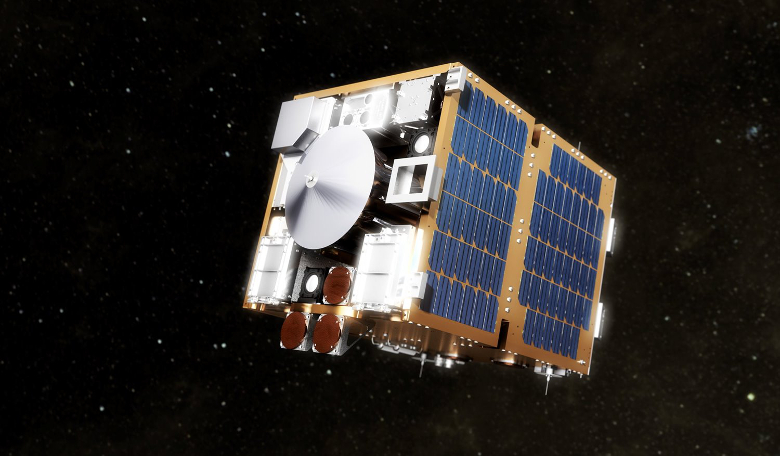RemoveDEBRIS, a satellite that uses a net to capture space junk, reached its first milestone this week as it successfully caught some mock debris 300 kilometres above the Earth.
Like the plastic that pollutes our oceans, years of shooting satellites into a low Earth Orbit has now led to the burgeoning problem of space junk that litters the skies around our planet.
It is estimated that over half a million pieces of debris of varying sizes clutter the space around Earth. The problem has become so huge, that specialist programs have been set up by space agencies and aerospace companies alike to tackle this dilemma.
One such endeavour is RemoveDEBRIS. This specialist satellite was designed, built and manufactured by a consortium of leading space companies including the Surrey Space Centre, Airbus and the ArianeGroup, and was co-funded by the European Commission. It is also the first of its type to perform a test clean-up operation in its intended environment.
The project's aim is quite simply; point the satellite at a piece of space junk, fire a net at it, capture it and send the ensemble plunging into the atmosphere where it will burn up. Or at least that is the basic idea. And, after being fired by astronauts onboard the International Space Station to test its effectiveness, the 100 kilogram satellite did just that. It successfully deployed its onboard net and captured a slow moving target probe some 7 metres ahead. To ensure the target probe was big enough, the CubeSat inflated a balloon to increase its target area. The captured package was then left to de-orbit, I.e fall from the skies, at an accelerated rate.
"The target was spinning like you would expect an uncooperative piece of junk to behave, but you can see clearly that the net captures it, and we're very happy with the way the experiment went,” said Prof Guglielmo Aglietti, director of the Surrey Space Centre.
Sir Martin Sweeting, Executive Chairman of SSTL and Chairman of the Surrey Space Centre, added “RemoveDEBRIS is an exciting and highly innovative mission that has brought together leading space organisations to tackle the issue of space junk. I look forward to discovering how all four experiments on board the spacecraft perform over the next few months, and I sincerely hope that the success of this mission will mark a step-change from demonstration to regular Active Debris Removal missions in the future.”
The video of RemoveDEBRIS’s debut debris hunt, taken by the satellite itself, can be seen here;











